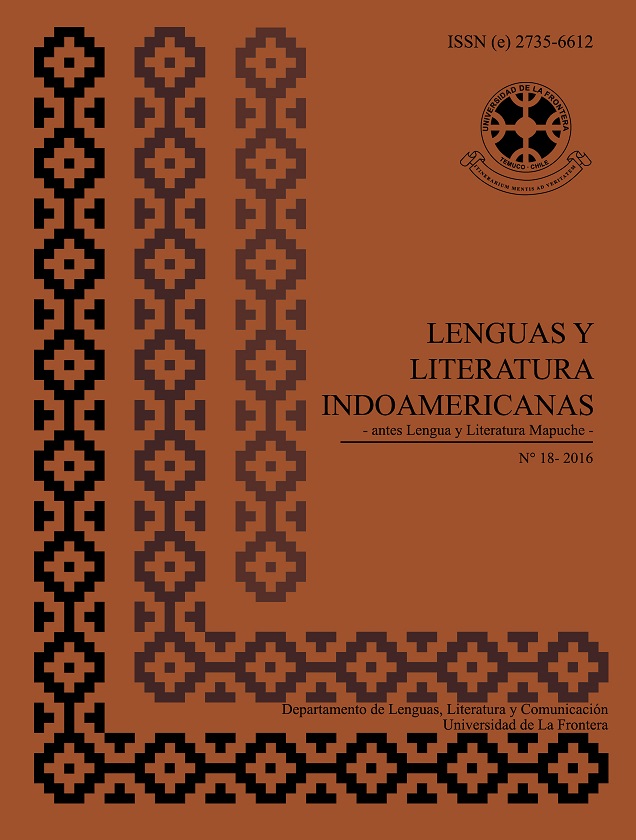T‘aan: más que lengua, más que palabra
Keywords:
lengua maya, cultura maya, vitalidad lingüística, t'aan, lengua y habla, lenguas indígenasAbstract
Los abuelos mayas de las comunidades rurales del estado de Quintana Roo, México, expresan a través de sus metalenguajes que la lengua que los vio nacer y les dio vida, día a día, está muriendo por un cáncer sociolingüístico llamado “silenciamiento intergeneracional”. A la medida de lo posible, intentan explicarnos desde sus conciencias lingüísticas, lo que queda de la “autosostenibilidad” de sus lenguas, que alimentan todos los días mediante “el control social” y la revitalización de los elementos y prácticas culturales que le dan vida a su lengua. Este artículo describe, a través de un estudio etnográfico, los elementos que ayudan a darle autosostenibilidad a la lengua maya; con sus usuarios, en sus propios espacios socioculturales, y, con la misma lengua.
T’AAN: MORE THAN LANGUAGE, MORE THAN WORDS
Abstract
Mayan grandparents from rural communities of the Quintana Roo state in Mexico express through their metalanguage, how the language that gave them birth and made them alive is now slowly dying from a sociolinguistic cancer called intergenerational silent. They do their best from their linguistic conscience to explain us what is left from the self sustainability of the languages they feed every day with the social control, revitalization of the elements and cultural practices that make these languages alive. This article derscribes through an etnographic study, the elementos that help the Mayan language get self sustainability with its speakers in their own sociocultural areas and with the Mayan language itself.
Keywords: Mayan language, linguistic vitality, self sustainability, language, speech
U Chan ts’íibil
Le maaya nooltsilo’ob ku kajtalo’ob ti’ u mejen kajtalilo’ob u peten lu’umil Quintana Roo, Meejikoe’, ku ya’aliko’ob yéetel u t’aano’obe’, le t’aan bin il u síijilo’ob yéetel le ts’a u kuxtalo’obo’, sáansamal bin, táan u kíimil tu yo’osal jun p’éel u k’aak’as k’oja’anil t’aan ku k’aaba’tik “U ma’akal u chi’ paalal ti’ t’aan”. Je’ex bix u páajtalo’obe’, ku ts’aikuba’ob u tsolo’ob to’on ba’ax ku na’atiko’ob ichil u yóol u t’aano’ob tu yóok’ol le ba’ax ts’aik u “sayab kuxtal” le t’aano’obo’, ku tséentiko’ob sáansamal yéetel “u kananil u kaajalo’ob” yéetel u ts’a kuxtalil ku ts’aiko’ob ti’ le ba’alo’ob yéetel le meyajo’ob ts’akkuntik u kuxtal u t’aano’obo’. Le chan ts’íib lela’, yéetel u xak’na’atil kaaje’, ku ye’esik u tsolik bix yanik le ba’alo’ob áantik u sayabtal u kuxtal maaya t’aan; yéetel u yuumilo’ob t’anik, ichil u yichnajil u kuxtalo’ob, yéetel, yéetel u t’aanilo’ob.
U kaxan t’aanilo’ob: Maaya t’aan, u kuxtal t’aan, u sayab kuxtal t’aan, t’aan yéetel t’aan
Downloads
Published
How to Cite
Issue
Section
License

This work is licensed under a Creative Commons Attribution 4.0 International License.
Los autores/as conservan los derechos de autor y ceden a la revista el derecho de la primera publicación. La publicación se registra con la licencia de atribución/reconocimiento de Creative Commons, que permite a terceros utilizar lo publicado siempre que mencionen la autoría del trabajo y la primera publicación en esta revista.







